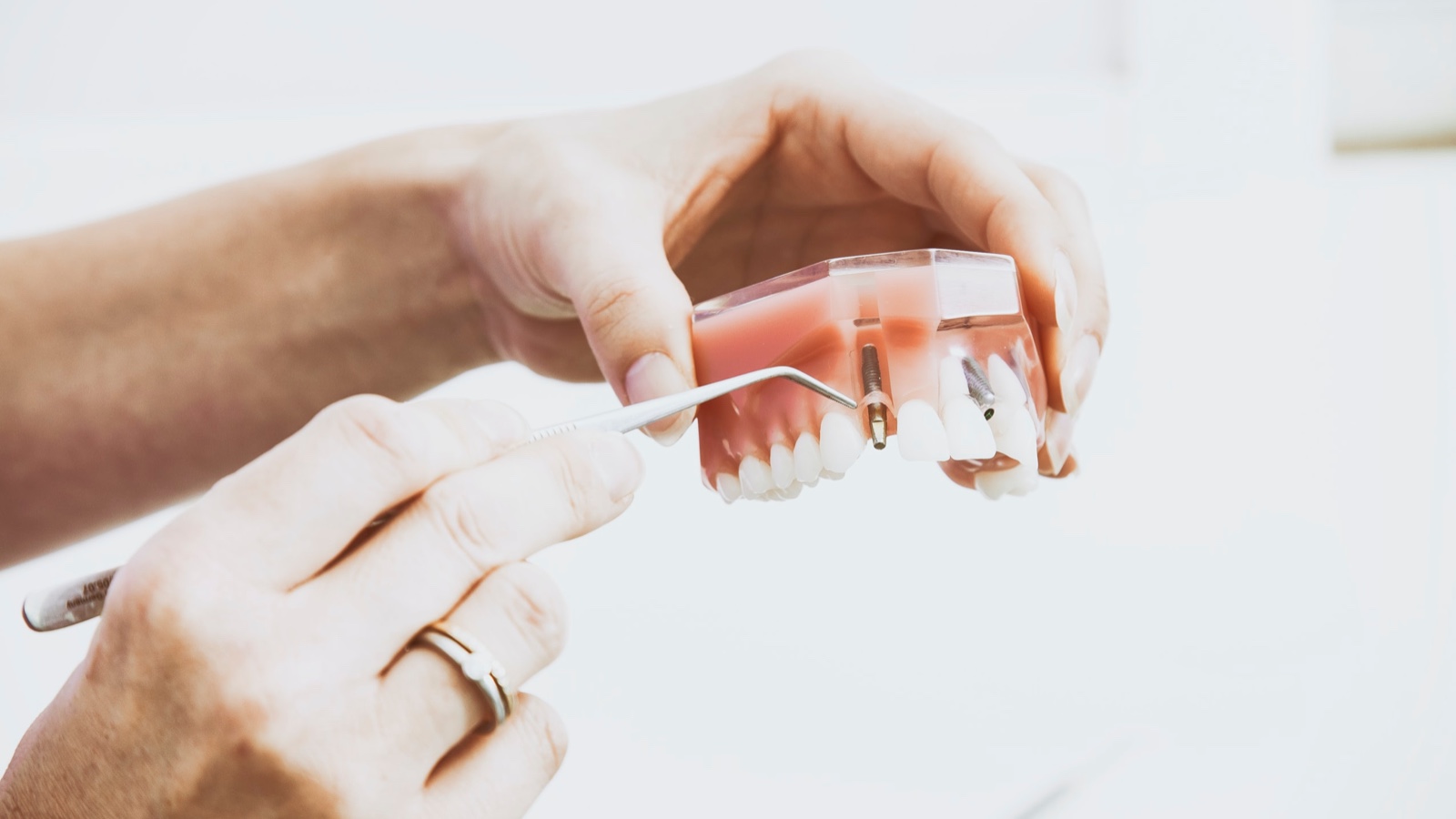
Pre-Health Pathway: Dentistry
An overview of the profession
The Pre-Health: Dentistry program in the CBU School of Sciences prepares students for further study toward a profession as a dentist. Today’s dentists are highly sophisticated health professionals who provide a wide range of oral health care that contributes to the general health and quality of their patients’ lives. They are at the forefront of a range of new developments in dental implants, computer-generated imaging and cosmetic and aesthetic procedures.
Dentists are instrumental in the early detection of oral cancer and systemic conditions that manifest in the mouth. They also can serve as first responders in the event of a large-scale health emergency.
GoDental is the official resource for those on the path to dentistry and other oral health careers. GoDental’s mission is to guide students through the process of becoming a dental professional by providing helpful resources and networking opportunities to its members. GoDental gathers information directly from its sponsor, the American Dental Education Association (ADEA), and its constituents in the dental education community.
The site offers members the opportunity to interact with the rest of the dental community through discussion topics, social media, blogs and videos. To start participating in the discussion, become a GoDental member today. Also, be sure to follow GoDental on Facebook and Twitter for updates about internship opportunities, events and dental education news.
For more information:
- ADEA video mentors explain why they decided to pursue careers in dentistry.
- For a listing of accredited dental schools in the United States, see the American Dental Education Association or American Dental Association websites.
- Did you know you can be a military dentist? Read “Four Reasons to Pursue a Military Dental Career.”
Pre-Health: Dentistry Coursework
The following chart describes the prerequisites listed for the University of Tennessee Health Science Center College of Dentistry and what those particular courses are called at CBU. These prerequisites are typical of most dental schools in the United States:
| What they want | # of Hours | What we call it at CBU |
|---|---|---|
| Biology | 8 | BIOL 111 & Lab BIOL 112 & Lab |
| Other Biology: Histology Microbiology Comparative Anatomy | 4 | One of the following: BIOL 414 BIOL 312 BIOL 212 |
| General Chemistry | 8 | CHEM 113 & Lab CHEM 114 & Lab |
| Organic Chemistry | 8 | CHEM 211 & Lab CHEM 212 & Lab |
| Biochemistry | 4 | CHEM 312 & Lab |
| General Physics | 8 | PHYS 201 & Lab PHYS 202 & Lab |
| Electives | 52 | * See list |
* Elective courses can be chosen from the following: genetics, comparative anatomy, developmental biology, cell biology, histology, microbiology, molecular biology, physiology, and neurobiology.
Non-science elective courses may be chosen from philosophy, business administration, economics, public speaking, computer science and courses in the social sciences.
Acceptance/Admissions Statistics
The following is an excerpt from the Executive Summary of the ADEA (American Dental Education Association report regarding the 2010 Class:
In summary, interest in becoming a dentist remains strong, with 12,001 applicants in 2010, an increase of 55% from 2000. The increase in the number of dental schools and slight growth at some dental schools during the 2000s pushed the number of first-time enrollees to nearly 5,000. Overall dental schools received 2.4 applications for every one spot in the entering class. However, the number of applications received per slot by dental school ranged from three to 45. Six schools received 35 to 45 applications per slot and 19 schools received 25 to 34 applications per slot. Men continue to make up the majority of applicants and enrollees; however, the percentages of women have increased with 15 dental schools enrolling 51% or more women in their entering class. The number of URM applicants and entering enrollees increased minimally. Despite increased numbers in URM applicants and first-year enrollees, the share of URM applicants and enrollees in the entering class has remained the same and is not proportional to the U.S. population. The average GPA and DAT scores for dental enrollees have continued to be quite high. Finally, the average age of applicants (25) and enrollees (24) has remained the same since the 2009 entering class. The 2010 applicant and enrollment data continue to demonstrate growth and expansion for dental education in the United States. Increases in enrollment and the opening of new dental schools indicate that dentistry continues to be viewed as an attractive career option and an important area of educational and health care growth. In addition, the recent new accreditation standards adopted by the Commission on Dental Accreditation (2010) are in accord with preparing a high-quality dental workforce through the recruitment and educational efforts of our growing and evolving dental schools.
The Dental Admission Test (DAT)
The DAT measures…
- Academic ability
- Scientific understanding
- Perceptual ability
The DAT is…
- In English
- Multiple choice
- Computer based
- $385 each time you take it
- Given most days of the year
- Required by all U.S. Dental Schools
- Half-day long test: 4 hours and 15 minutes in length
- Taken at specified testing centers throughout the country
What are the sections of the DAT?
- Natural sciences (biology, general chemistry, and organic chemistry)
- Perceptual ability (two- and three-dimensional problem solving)
- Reading comprehension (dental and basic sciences)
- Quantitative reasoning (mathematical problems in algebra, numerical calculations, conversions, etc.)
When should I take the test?
- When you have completed your prerequisites in biology, general chemistry, and organic chemistry.
- It is recommended that you take the test at least one year before you want to go to dental school. Most of those who take the DAT do so after their third year of college.
How do I study for the test?
- Review the content and outline of the exam itself.
- Study the key principles you learned in biology and chemistry.
- Take practice tests to gauge your abilities before the exam and try to improve each time you take one.
- Check out all of the DAT information on the ADA website, such as the DAT Candidates Guide and online tutorial.
What are the rules and regulations?
- You can only take the test once every 90 days.
- You can only take the test three times, no more unless you get special permission from the ADA.
How do I sign up to take the test?
- Visit the ADA website to submit an application to take the DAT (non-refundable fee is associated).
- You will be asked to create a DENTPIN, your Dental Personal Identifier Number, before you can complete the application to register for the DAT. This number will be used throughout the dental school application process and for any other testing conducted by the ADA.
- Receive eligibility letter from the ADA.
- Once you have received the eligibility letter, you can schedule an appointment to take the test with Prometric testing. You should schedule the test 60-90 days in advance of the day you would like to test. Check out the list of test centers here.
- If you require special testing accommodations, visit the Special Accommodations section of the Prometric website.
Other Important Notes:
- If you are planning to apply to a Canadian dental school, you will have to take the Canadian DAT administered by the Canadian Dental Association and the Association of Canadian Faculties of Dentistry.
- Most Canadian dental schools require the Canadian DAT, but some accept the U.S. DAT. Contact the Dental Aptitude Test Program of the Canadian Dental Association for more information.
- U.S. dental schools accept the Canadian DAT in addition to the U.S. DAT.
Contact information regarding careers in dentistry
Contact Us



